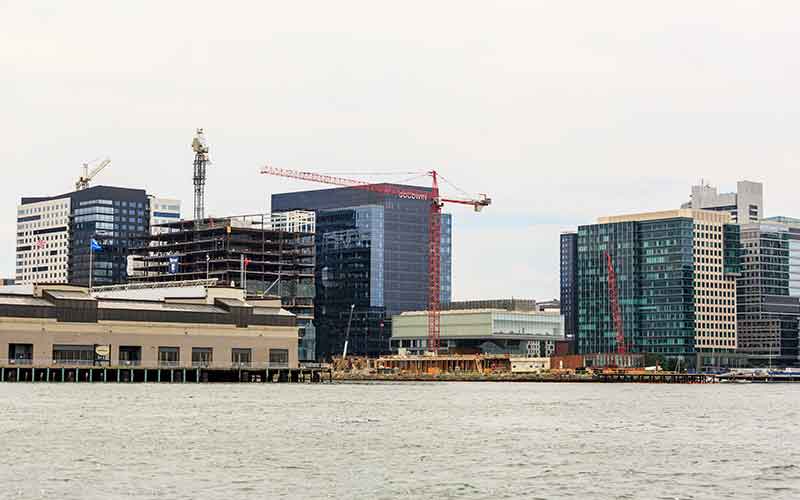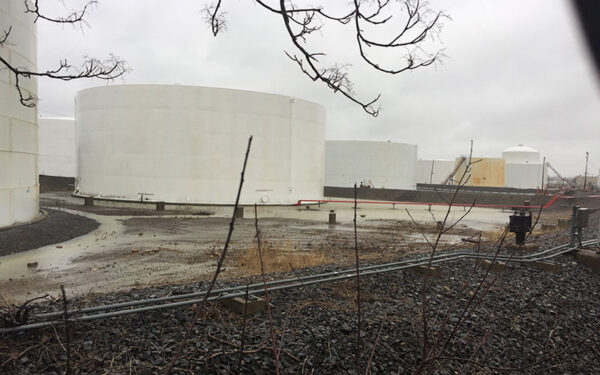
Developers wield immense power in the politics of most cities and states. When it comes to urgent climate policy, their short-term interests must not be allowed to call the tune. Photo: Ecophotography
Joan Fitzgerald is a professor in the School of Public Policy & Urban Affairs at Northeastern University. Her latest book, Greenovation: Urban Leadership on Climate Change, was published this March by Oxford Univ. Press. This blog was originally published on planetizen.com on January 21, 2021.
Cities with aggressive climate standards such as net zero or 100% renewable energy by 2050 are running into roadblocks. Achieving these goals will require strong building energy codes and ending the use of fossil fuels in buildings for space and water heating and cooking. We’re starting to see that neither the natural gas utilities nor the real estate industry will sit by quietly as cities and states enforce stronger building codes and ban natural gas infrastructure in new construction.
It just happened in Massachusetts – a state considered a leader on energy efficiency and climate change. In November 2019, the Town of Brookline passed a bylaw banning natural gas infrastructure for space and water heating in new construction and major renovations. While Brookline was the first in Massachusetts, more than 41 cities nationally have codes that eliminate or minimize natural gas in buildings.
The Home Builders and Remodelers Association of Massachusetts was a vocal critic of the bylaw, as were the American Gas Association and the American Petroleum Institute, which threatened court challenges of the law. It passed anyway but was stopped by state law.
In July 2020, Massachusetts Attorney General Maura Healey reluctantly ruled that Brookline’s bylaw prohibiting the installation of oil and gas lines in new and substantially renovated buildings violates state preemption law – meaning that cities and towns cannot pass energy requirements stronger than the state’s code. Massachusetts is one of several states where cities and towns cannot impose stricter building energy codes than the State.
Meanwhile, the legislature was putting together a landmark climate bill that would require the state to achieve net zero greenhouse gas emissions by 2050 with interim goals each decade (e.g., reduce emissions by 50% below 1990 levels by 2030). The net zero goal would be achieved by increasing energy-efficiency requirements in appliances and increased reliance on offshore wind and solar power. A key provision would allow cities and towns to adopt net zero codes – meaning that a building is very energy efficient and completely powered by renewable energy produced either on- or off-site. Both the NAIOP (National Association of Industrial and Office Properties) Massachusetts and the Greater Boston Real Estate Board came out against the legislation on the grounds that it would increase construction costs.
Governor Charlie Baker listened. The legislature passed the bill on January 4th, but Governor Baker vetoed it on the14th, saying, “One of my big concerns is I’ve gotten a lot of incoming [sic] from a lot of folks who are in the building and home construction business who have said that certain pieces of this bill, which remember I can’t amend and send back, literally may just stop in its tracks any housing development in the commonwealth and those words get my attention.”
To his credit, Baker has supported strong climate legislation and is a leader in a recent major multi-state effort, the Transportation and Climate Initiative, a program aimed at reducing motor vehicle pollution by at least 26% by 2032*. Leaders of both houses of the Massachusetts Legislature are committed to reintroducing the bill in the next session, and, with negotiation, some form of the bill will pass. But if the argument that construction costs are too high to justify aggressive building efficiency standards can prevail in Massachusetts, we need to make a stronger case if similar policies are to pass elsewhere.
While it’s true that net zero construction currently can cost 5–10% more than standard construction, these buildings cost considerably less to heat and cool. Researchers are demonstrating how the technological design of energy systems in the early design phase reduces costs. The U.S. Department of Energy’s National Renewable Energy Lab came to the same conclusion in 2012. As the standard becomes more common, the cost differential goes down. A study by the Rocky Mountain Institute estimates that the cost of building to the standard will decline by half by 2050. We won’t get to these efficiencies without building codes requiring the standard.
California illustrates the potential savings to consumers. The state requires that all new residential construction be zero net energy now and new commercial construction by 2030. In addition, half of all commercial buildings must be retrofitted to the standard by 2030. Since then, several California cities have become leaders in the field. For residential construction, the standard adds $40 to a monthly mortgage payment, which is offset by an $80 per month return on heating, cooling, and lighting over a 30-year term.
The net zero standard is an environmental justice standard. Low-income families pay a higher percentage of their income on home energy. This energy burden can be as much as three times higher than the average household. Richmond, California, Portland, Oregon, San Francisco, New York State, and many other places are demonstrating that building new and retrofitting existing low-income housing to net zero standards is possible. It not only reduces energy burden but reduces indoor air pollution, a demonstrated public health threat, by eliminating gas appliances.
The horse has left the barn. Leading cities throughout the world are committing to net zero carbon buildings and demonstrating that even low-income housing can be built to this standard cost effectively.
Extractive industries are often seen as the prime obstacle to good policy. But it’s an open secret that developers wield immense power in the politics of most cities and states. When it comes to urgent climate policy, their short-term interests must not be allowed to call the tune.
*CLF’s position on the Transportation and Climate Initiative is that, as written, the current framework will not cut emissions at the scale needed to reach the climate targets set (and, in some cases, mandated) by New England states. Nor is there certainty that those cuts will make a meaningful difference in air quality and mobility for the communities that need it most. We will continue pushing to make TCI live up to its full potential and advocating for the range of interrelated policies needed to transform our transportation system.



